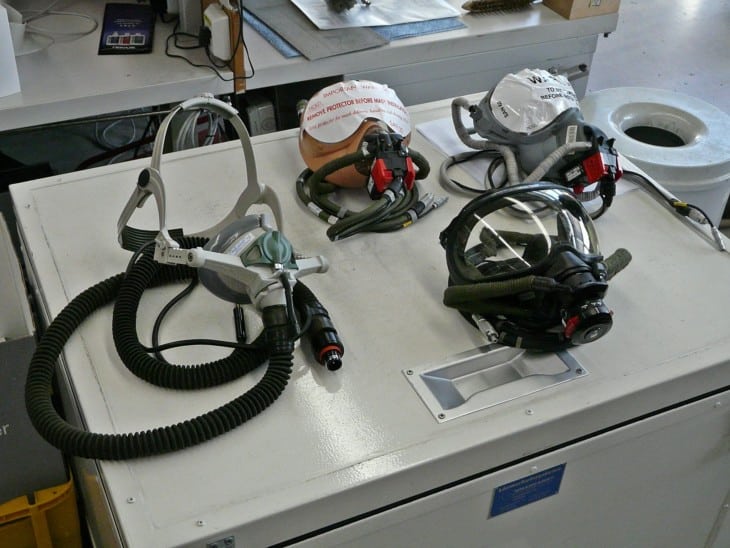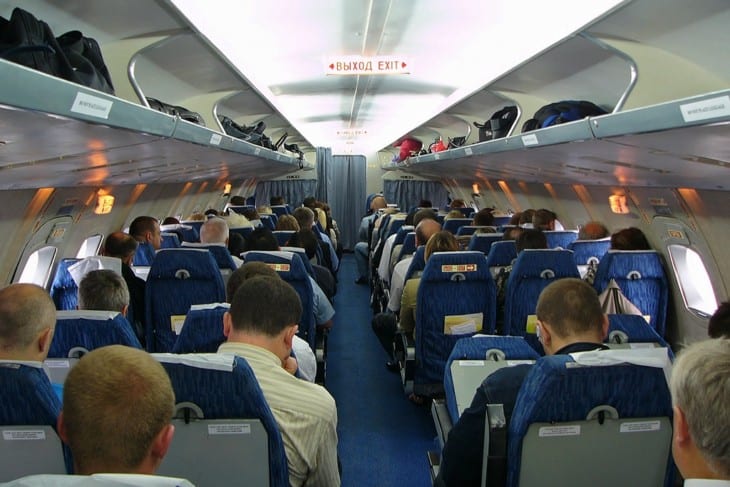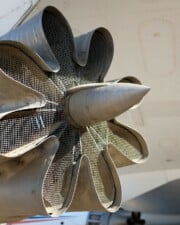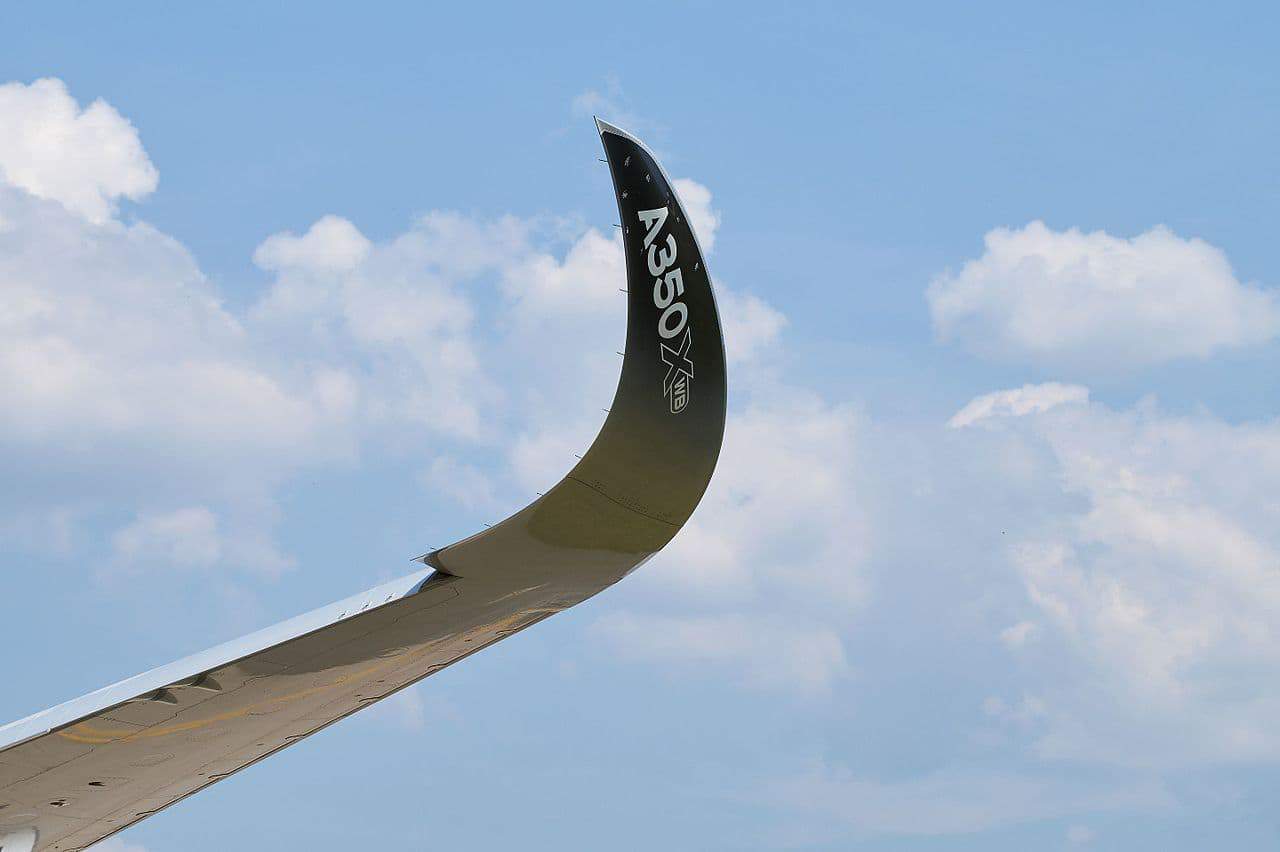At the dawn of aviation, technology was expanding quickly every year. Planes traveled farther, flew higher, and got faster and faster. One of the roadblocks designers had to overcome was actually a limitation of the human body. Their planes performed better the higher they were operated, but the human at the controls needed more oxygen than was available. Today, passengers are flying routinely above 30,000 feet high with no ill effects. So, how do they do it?
All modern airliners are pressurized, meaning that they have a sophisticated environmental control system that keeps the air pressure in the cabin equal to about 8,000 feet above sea level. There’s plenty of oxygen at this level to keep everyone alert, and the system also keeps the air clean and heated for everyone’s comfort.
How Do Airplane Cabins Get Oxygen?
As altitude increases, the atmosphere contains the same percentage of oxygen than it does at sea level. No matter where you are, on the beach, standing on Mount Everest, or flying in a jet, the atmosphere contains about 21 percent oxygen.

So why can’t humans survive at any altitude? The problem steams from air pressure. At sea level, the entire weight of all of the atmosphere is pressing down on you. There are many units to measure atmospheric pressures, but on average, it exerts about 14.7 pounds per square inch, 1013.25 millibars, or 29.92 inches of mercury at sea level.
But as you climb up and away from sea level, there is less atmosphere above you pressing down on you. Since it is less dense, each breath you draw in contains fewer oxygen molecules. At some point, there won’t be enough to keep you conscious.
Obviously, to operate at higher altitudes, aircraft need to get more oxygen in their air. But how can airplanes get it? There are two ways.
The first way is used by small airplane pilots and was used by test pilots and fighter pilots for decades. You simply need to carry a tank of pure oxygen with you and wear a face mask that delivers it.
It’s a bit of a hassle to have an oxygen tank, so fancier planes have oxygen systems built-in. There are ports in the cockpit for you to plug in your oxygen mask into, and a control panel allows you to set how much flow you need.
But the modern flying public isn’t used to wearing oxygen masks all of the time because designers found another way to provide oxygen to airliner cabins.
Instead of adding more oxygen into the air you are breathing, aircraft pressurization systems keep the inside of the plane filled with dense air. They seldom keep the plane at sea level, but they keep it reasonably close to it at around 8,000 feet.
Supplemental Oxygen Regulations
The Federal Aviation Administration lays out when pilots and passengers must use oxygen tanks in unpressurized aircraft. This gives you some idea of when the human body can no longer function without doing something to get more oxygen.
On flights that operate above 12,500 feet, the flight crew must use supplemental oxygen after 30 minutes. The wording sounds odd, but this provides pilots operating over mountain passes enough to time to clear the pass and descend back down to a lower altitude without going to the trouble of carrying the extra oxygen.
If the plane goes above 14,000 feet, the flight crew must use oxygen at all times above that altitude. And if the plane gets over 15,000 feet, the passengers must be provided with oxygen.

Even with these lenient rules, the FAA recommends in the Aeronautical Information Manual that pilots use supplemental oxygen at all times when above 10,000 feet in the day and above 5,000 feet at night.
How Does Aircraft Pressurization Work?
Many aircraft engines work by taking outside air and pressurizing it in some way. This is fundamentally how a jet or turbine engine works, and it’s how a turbocharger on a piston engine works. A large fan feeds a series of smaller and smaller fans with more and more air until it is compressed many times denser than outside air. The dense air gets very hot, and when the engine adds fuel, it burns to create thrust out the back of the engine.
Airplane builders have found other uses for some of that hot and dense air, though. Before the combustion phase in the engine, some of it is redirected for other uses. This “bleed air” as it’s called, can be used for de-icing the plane by heating it or for cabin pressurization systems.
Before that air can be pumped into the cabin, it is cooled down with a series of intercoolers and air packs. These are simple devices that allow the excess heat to bleed off while maintaining the high pressure. The air is then mixed to just the right temperature, and then it is directed into the cabin.
The pressurization system continually feeds air into the cabin. The magic happens on the backside, where a device called an outflow valve sets the cabin altitude. The cabin’s windows and doors are all air-tight, so all of that air will continue to build up pressure. The outflow valve begins letting air back out in a controlled fashion so that the cabin maintains a certain altitude.
The exact cabin altitude experienced in an airliner’s fuselage depends upon how the designers made the plane. The limiting factor is the differential pressure–how much difference is there between the outside and inside air pressure. The tighter all of the seals and windows in a plane are built, the bigger the difference can be.

Modern planes compete based on their pressurization systems’ quality since a better system means a lower cabin altitude and more oxygen in each breath you take.
Gulfstream, for example, sells high-end corporate jets. Many executives use these planes as mobile offices to maintain productivity during travel. Gulfstream has figured this out and markets its planes as having the lowest cabin altitude in the industry.
Oxygen Levels on Long-Haul Flights
Gulfstream’s cleaver marketing hints at a fact not often discussed by the airlines. If the airplane’s cabin altitude is set to 7,000 or 8,000 feet and the passengers departed a sea-level airport, then there is less oxygen in the air. There is still plenty enough oxygen to keep everyone conscious and healthy, but for individuals flying with low blood oxygen levels, the difference could be significant.
Hypoxia is the medical condition that results from a lack of oxygen in the bloodstream. Most people will get slightly hypoxic at the cabin altitudes discussed, but generally, the side effects are very mild and short-lived. Even on a very long-haul flight, the only side effects are fatigue or possibly mental fuzziness. If a person is susceptible to hypoxia for other reasons, such as alcohol consumption or drug use, then the effects are greater.
Hypoxia is covered in Chapter 17 of the FAA’s Pilot’s Handbook of Aeronautical Knowledge.
What if Something Goes Wrong?
Hollywood movies have made us all aware of the dangers related to flying in pressurized airplanes. If somebody pulls out a gun and shoots the window, then the entire plane explosively depressurizes, right?
The answer is that it’s not really that simple. The plane isn’t sealed like a balloon, ready to pop. The outflow valve is already letting air flow out of the cabin. A bullet hole would likely not do very much damage.

But there have been incidents of depressurization in flight, both explosive and slow leaks. A standard part of pilot training is learning how to deal with these problems. The first action the pilots will take is to initiate a fast emergency descent to a lower altitude where there’s more oxygen. It will take a few minutes to get there, so oxygen masks drop from the ceiling for the passengers. The pilots have quick-donning oxygen masks ready to go in the cockpit at all times.
Related Posts














